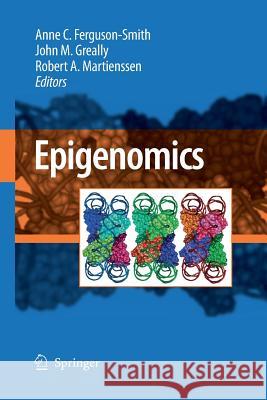Epigenomics » książka
Epigenomics
ISBN-13: 9789400789548 / Angielski / Miękka / 2014 / 438 str.
Epigenomics
ISBN-13: 9789400789548 / Angielski / Miękka / 2014 / 438 str.
(netto: 788,23 VAT: 5%)
Najniższa cena z 30 dni: 792,68
ok. 22 dni roboczych
Dostawa w 2026 r.
Darmowa dostawa!
Epigenetic modifications act on DNA and its packaging proteins, the histones, to regulate genome function. Manifest as the heritable methylation of DNA and as post-translational histone modifications, these molecular flags influence the architecture and integrity of the chromosome, the accessibility of DNA to gene regulatory components and the ability of chromatin to interact within nuclear complexes. While a multicellular individual has only one genome, it has multiple epigenomes reflecting the diversity of cell types and their properties at different times of life; in health and in disease. Relationships are emerging between the underlying DNA sequence and dynamic epigenetic states and their consequences, such as the role of RNA interference and non-coding RNA. These integrated approaches go hand-in-hand with studies describing the genomic locations of epigenetic modifications in different cell types at different times. The excitement and curiosity surrounding epigenomics is driven by a growing community of researchers in a burgeoning field and the development of new technologies built on the backbone of genome sequencing projects. Research has shown that the adaptability and vulnerability of epigenetic states has profound effects on natural variation, the response of the genome to its environment and on health and disease. The aim of this volume is not to describe epigenomes, but rather to explore how understanding epigenomes tells us more about how biological systems work and the challenges and approaches taken to accomplish this. These contributions have attempted to integrate epigenomics into our understanding of genomes in wider context, and to communicate some of the wonders of epigenetics illustrated through examples across the biological spectrum.











